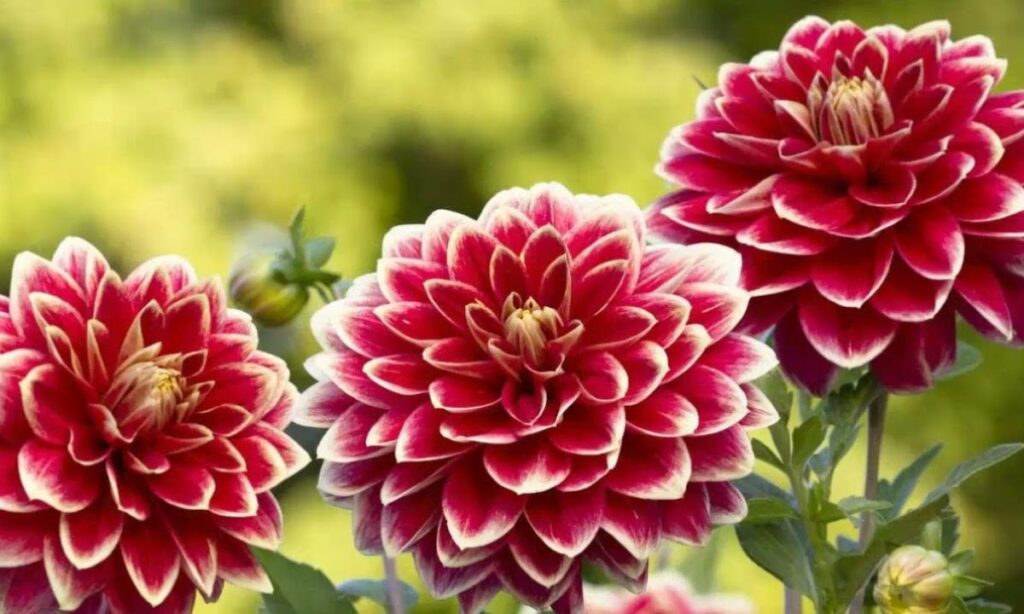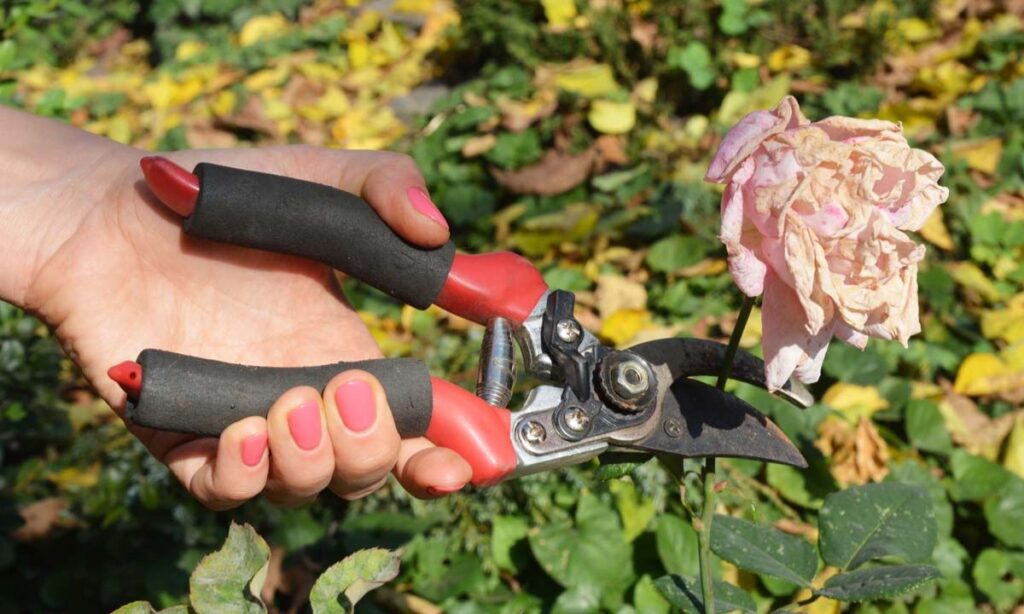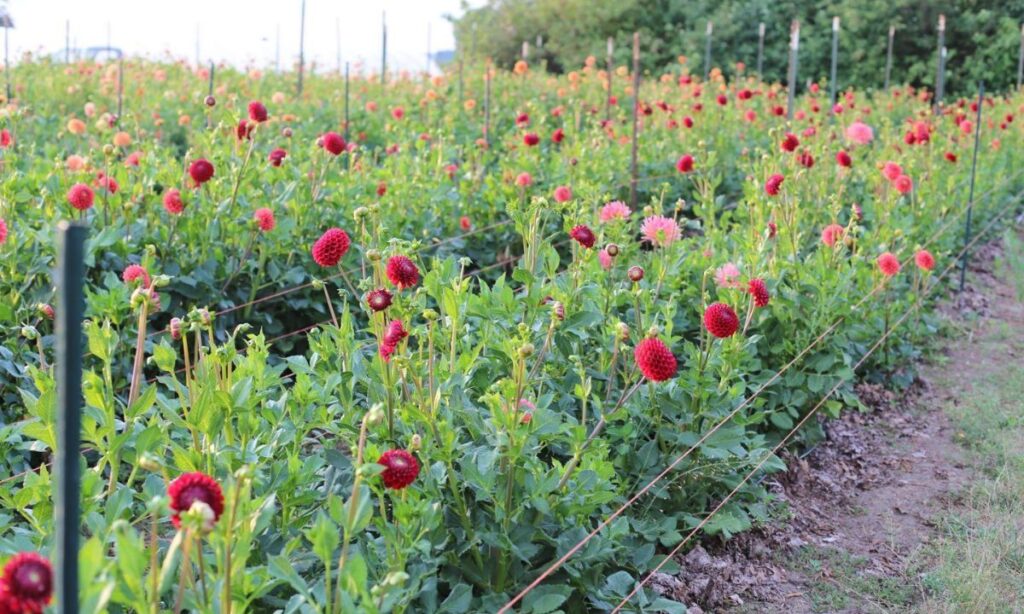Dahlias are stunning perennial flowers that bloom in a wide variety of shapes, colors, and sizes, making them a favorite among gardeners.
Native to Mexico and Central America, these flowers are known for their vibrant blooms and ability to brighten up any garden space. Whether you are a beginner or an experienced gardener, growing dahlias can be a rewarding and enjoyable experience.
This guide provides a step-by-step approach to planting, growing, and caring for dahlias in 2024, ensuring they thrive and deliver a spectacular display.
The Importance of Growing Dahlias Flowers
Growing dahlias not only enhances the beauty of your garden but also comes with numerous benefits. Dahlias are popular for their long blooming period, lasting from midsummer to the first frost.
These flowers attract beneficial pollinators like bees and butterflies, contributing to a healthy garden ecosystem.
Additionally, dahlias are ideal for cut flower arrangements due to their bold, long-lasting blooms. By growing dahlias, gardeners can enjoy both aesthetic appeal and ecological benefits.
Overview of Dahlias Flowers and Their Genus Types
Dahlias belong to the genus Dahlia, which includes 42 species and thousands of cultivars. Known for their diverse appearances, dahlias can range from small pompons to giant dinner-plate varieties.
The flowers are characterized by their tuberous roots and their ability to adapt to various environments. Each genus type of dahlia offers unique features, colors, and growth habits, making them versatile for any garden setup.
Popular Genus Types of Dahlias Flowers

Here are the most popular genus types of dahlias:
- Decorative Dahlias: Known for their large, double blooms with broad petals.
- Cactus Dahlias: Features narrow, spiky petals that curl outward.
- Pompon Dahlias: Small, spherical blooms with tightly packed petals.
- Dinner-Plate Dahlias: Gigantic flowers that can reach up to 12 inches in diameter.
- Anemone Dahlias: Central disc surrounded by flat petals, giving a unique appearance.
Each variety has its own charm, making it essential to choose the right one for your garden based on your space and aesthetic preferences.
Where to Plant Dahlias Flowers?
To ensure optimal growth and blooming, selecting the right location for planting dahlias is crucial. Here’s what you need to consider:
Ideal Sunlight
Dahlias thrive in areas with full sunlight. They require at least 6-8 hours of direct sunlight daily to produce vibrant and healthy blooms. If you live in a hot climate, some afternoon shade can help prevent scorching.
Soil Conditions
The soil plays a significant role in the health of dahlia plants. Dahlias prefer well-draining, rich soil with a slightly acidic to neutral pH (6.5-7.0). You can improve your soil quality by adding compost, manure, or organic matter to enhance its fertility and drainage.
Proper Spacing
Dahlia plants need adequate spacing to grow freely and prevent overcrowding. Maintain a spacing of 18-24 inches between plants for medium-sized dahlias and up to 36 inches for larger varieties. Proper spacing allows better air circulation, which helps reduce the risk of fungal diseases.
Also Read This: 10 Little-Known Facts About Dahlias that you need to know
Dahlia Care Tips: Temperature, Humidity, Watering, and More
Proper care is essential to ensure the health and longevity of your dahlias. Follow these tips to keep your plants thriving:
Temperature Requirements for Dahlias Flowers
Dahlias prefer a warm climate with temperatures between 60°F to 75°F (15°C to 24°C). They are sensitive to frost, so planting them after the last frost date in spring is ideal. In colder regions, gardeners often start tubers indoors and transplant them outdoors when temperatures rise.
Humidity Needs for Dahlias Flowers
Dahlias grow well in moderate humidity levels. However, excessive humidity can lead to issues like powdery mildew or root rot. Ensure proper air circulation around the plants to prevent moisture buildup.
Watering Schedule for Dahlias Flowers
Watering dahlias properly is critical for their growth. Here is a basic watering guide:
- Young plants require regular watering to establish roots.
- Mature dahlias need about 1 inch of water per week during the growing season.
- Avoid overwatering, as soggy soil can cause root rot. Use mulch to retain soil moisture.
Fertilizers for Dahlias Flowers
Dahlias benefit from balanced fertilizers rich in phosphorus and potassium but low in nitrogen. Apply a fertilizer with a ratio like 5-10-10 or 10-20-20 every 3-4 weeks. Avoid excess nitrogen, as it promotes leafy growth instead of blooms.
Cutting and Deadheading Dahlias Flowers

Regular cutting and deadheading encourage dahlias to produce more flowers.
- Cutting: Harvest blooms regularly for floral arrangements, cutting stems at a 45-degree angle.
- Deadheading: Remove spent flowers to direct the plant’s energy toward producing new blooms. This keeps the plant healthy and visually appealing.
Potting and Repotting Dahlias Flowers
Dahlias can thrive in containers if properly potted and repotted. Here’s how:
Potting Dahlias Flowers
- Choose a pot at least 12-18 inches deep with drainage holes.
- Use well-draining potting soil mixed with compost.
- Plant tubers 4-6 inches deep with the eye (bud) facing up.
Repotting Dahlias Flowers
- Repot dahlias in fresh soil every 1-2 years to ensure nutrient availability.
- Remove tubers carefully during winter, clean them, and store them in a cool, dry place before replanting in spring.
How to Stake Dahlias Flowers?

Staking is necessary for taller dahlia varieties to prevent them from falling over. Here’s how to stake your dahlias effectively:
Steps to Stake Dahlias Flowers
- Insert a sturdy stake (wooden, bamboo, or metal) into the soil at planting time.
- Place the stake 6 inches from the tuber to avoid damaging roots.
- As the plant grows, gently tie the main stem to the stake with soft garden twine.
- Continue securing the stem at intervals as it grows taller to provide support.
Staking ensures your dahlias remain upright, even in windy conditions.
Winter Care for Dahlias Flowers
Dahlias are not frost-tolerant and require special care during winter to survive. Follow these winter care tips:
- Digging Up Tubers: After the first frost, cut the plant down to 4-6 inches and carefully dig up the tubers.
- Drying and Storing Tubers: Allow the tubers to dry for a few days, then store them in peat moss or sawdust in a cool, dry location.
- Inspect for Damage: Check tubers periodically for mold or rot and discard any that show signs of disease.
Proper winter care ensures your dahlias are ready to be replanted next spring.
Frequently Asked Questions
How long do dahlias take to bloom?
Dahlias typically bloom 8-12 weeks after planting, depending on the variety and growing conditions.
Can dahlias grow in pots?
Yes, dahlias can thrive in pots, provided they have adequate drainage and enough space to grow.
What is the best time to plant dahlias?
The best time to plant dahlias is in spring after the last frost, when soil temperatures are warm.
How often should I water dahlias?
Water dahlias once or twice a week, providing about 1 inch of water per week during active growth.
Do dahlias come back every year?
In warmer climates, dahlias can return each year. In colder regions, tubers must be dug up and stored during winter.
Conclusion
\Dahlias are a fantastic addition to any garden, offering stunning, colorful blooms that last for months. By following the steps outlined in this guide, including selecting the right location, ensuring proper care, and managing winter storage, you can successfully grow and enjoy dahlias year after year.
Whether planted in the ground or in pots, dahlias reward gardeners with an abundance of beauty and versatility. With proper attention to watering, staking, and fertilizing, your dahlias will thrive and become the centerpiece of your garden.

FAtima is a talented content writer and digital marketer with expertise in SEO, social media management, and online marketing.










